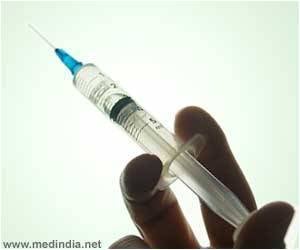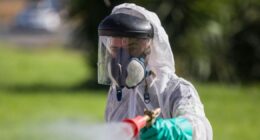
Without the vaccination, mortality from the 10 diseases in this age group would be 45% higher than currently observed.
The new study involved 16 independent research groups modeling the impact of childhood vaccination programs in 98 LMICs. The study assessed the impact of vaccination programs against ten pathogens: Hepatitis B (HepB), Haemophilus influenzae type b (Hib), Human papillomavirus (HPV), Japanese encephalitis (JE), Measles, Neisseria meningitidis serogroup A (MenA), Streptococcus pneumoniae, rotavirus, rubella virus, and yellow fever virus (YF).
“There has been a much-needed investment in childhood vaccination programs in low-income and middle-income countries (LMICs) and this has led to an increase in the number of children vaccinated. To inform future investment and ensure it continues we need to evaluate the impact of these programs on public health. Our modeling has provided robust evidence on the effectiveness of vaccination programs in LMICs and indicated what might be lost if current vaccination programs are not sustained”, says Dr. Caroline Trotter from the University of Cambridge UK, and a co-author of the study.
By comparing a scenario with no vaccination programs in place to scenarios when vaccination programs had been implemented, the study estimated the impact on deaths and DALYs (Disability Adjusted Life Years).
Two techniques, both a cross-sectional (yearly) and longer-term (lifetime) view for assessing the impact were utilized by the study team. The first method surveyed the distinction in the number of deaths between the vaccination and no vaccination scenarios for each year and then totaled these annual results.
READ RELATED: Just one glass of wine poured at home will tip you over the drink-drive limit, study finds
The second method surveyed the long-term impact of vaccination by summarising the impact over the lifetime for groups of people who were born in the same year between 2000 and 2030 and then calculated the difference between vaccination and no vaccination scenarios.
It was also estimated that vaccination programs resulted in a 72% reduction in lifetime mortality caused by the 10 pathogens for those born in 2019.
“By estimating how much higher mortality levels would be if there were no vaccination programs in place, our study has highlighted how crucial it is to maintain high coverage levels. This will require continuing political commitment, funding, public engagement to promote the benefits and safety of vaccinations, and programs to deliver education, training, and supervision on immunization”, says the Co-author Dr. Katy Gaythorpe, Imperial College London, UK.
Source: Medindia
Source:





